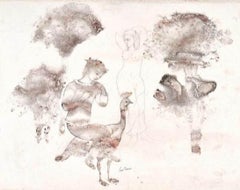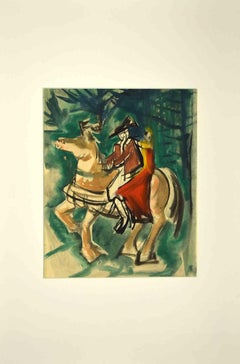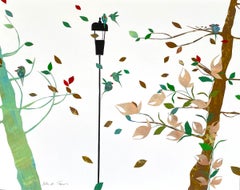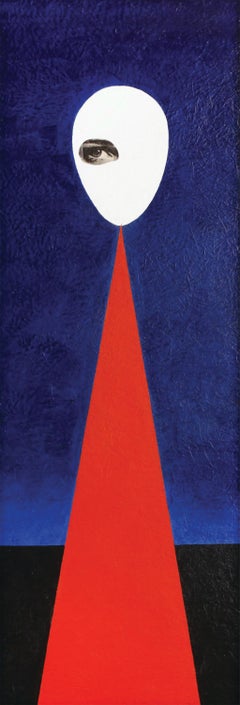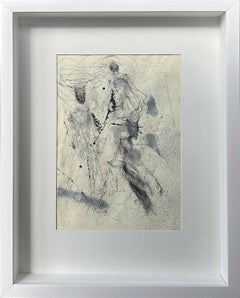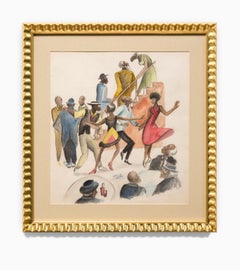Figurative Paintings
1960s Modern Figurative Paintings
Paper, Watercolor
1950s Modern Figurative Paintings
Ink, Tempera, Watercolor
2010s Modern Figurative Paintings
Archival Paper, Tape, Acrylic
1960s American Modern Figurative Paintings
Acrylic
1940s American Modern Figurative Paintings
Paper, Watercolor
Mid-20th Century Modern Figurative Paintings
Oil
2010s American Modern Figurative Paintings
Mixed Media
Mid-20th Century Modern Figurative Paintings
Oil
Early 2000s Modern Figurative Paintings
Paper, Ink
20th Century Modern Figurative Paintings
Paper, Ink
Late 20th Century American Modern Figurative Paintings
Oil
20th Century Modern Figurative Paintings
Paper, Ink
21st Century and Contemporary Contemporary Figurative Paintings
Paint, Charcoal, Ink, Mixed Media, Oil, Spray Paint, Acrylic, Archival P...
2010s Modern Figurative Paintings
Oil, Acrylic, Archival Paper
19th Century Other Art Style Figurative Paintings
Gold Leaf
2010s Contemporary Figurative Paintings
Color Pencil, Paper, Tape, Acrylic, Oil Pastel, Pencil
1910s American Modern Figurative Paintings
Oil, Board
19th Century Other Art Style Figurative Paintings
Ink, Tempera, Laid Paper
1950s American Modern Figurative Paintings
Oil, Board
1970s Modern Figurative Paintings
Paper, Watercolor, Gouache, Handmade Paper
Mid-20th Century Modern Figurative Paintings
Ink, Watercolor, Gouache
2010s Contemporary Figurative Paintings
Oil, Acrylic, Archival Paper
2010s Contemporary Figurative Paintings
Paper, Tape, Oil Pastel, Acrylic, Pencil, Color Pencil
19th Century Other Art Style Figurative Paintings
Ink, Tempera, Laid Paper
Mid-20th Century Modern Figurative Paintings
Oil, Paper
1930s American Modern Figurative Paintings
Paper, Watercolor, Graphite
1970s Modern Figurative Paintings
Paper, Lithograph, Watercolor
Early 2000s American Modern Figurative Paintings
Enamel
1970s Modern Figurative Paintings
Gouache, Ink
Mid-20th Century American Modern Figurative Paintings
Acrylic
Mid-20th Century Modern Figurative Paintings
Watercolor, Gouache
Figurative Paintings for Sale
Figurative art, as opposed to abstract art, retains features from the observable world in its representational depictions of subject matter. Most commonly, figurative paintings reference and explore the human body, but they can also include landscapes, architecture, plants and animals — all portrayed with realism.
While the oldest figurative art dates back tens of thousands of years to cave wall paintings, figurative works made from observation became especially prominent in the early Renaissance. Artists like Michelangelo, Leonardo da Vinci and other Renaissance masters created naturalistic representations of their subjects.
Pablo Picasso is lauded for laying the foundation for modern figurative art in the 1920s. Although abstracted, this work held a strong connection to representing people and other subjects. Other famous figurative artists include Francis Bacon and Lucian Freud. Figurative art in the 20th century would span such diverse genres as Expressionism, Pop art and Surrealism.
Today, a number of figural artists — such as Sedrick Huckaby, Daisy Patton and Eileen Cooper — are making art that uses the human body as its subject.
Because figurative art represents subjects from the real world, natural colors are common in these paintings. A piece of figurative art can be an exciting starting point for setting a tone and creating a color palette in a room.
Browse an extensive collection of figurative paintings on 1stDibs.
